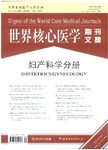正常阴道分娩后肛门括约肌的定量肌电图评价
Quantitative electromyography of the anal sphincter after uncomplicated vaginal delivery作者机构:Obstetrics and Gynecology Div. Urogynecol./Reconstr. Pelvic S. Oregon Health and Science University 3181 SW Sam Jackson Park Road Portland OR 97239 United States Dr.
出 版 物:《世界核心医学期刊文摘(妇产科学分册)》 (Core Journal in Obstetrics/Gynecology)
年 卷 期:2005年第1卷第9期
页 面:40-41页
学科分类:1002[医学-临床医学] 100211[医学-妇产科学] 10[医学]
主 题:阴道分娩 会阴神经 电冲动 经产妇 未产妇 正常分娩 盆腔器官 动作电位 大便失禁 常规检查
摘 要:OBJECTIVE: Fecal incontinence in women is thought to be associated with sphi nc ter laceration or pudendal nerve damage. A prolonged pudendal nerve terminal mot or latency is evidence of profound nerve damage, but pudendal nerve terminal mot or latency can be normal even when nerve injury has been sustained. We performed quantitative electromyography (EMG) to compare multiple motor unit action poten tial parameters between recently postpartum women and nulliparous women. METHODS : Standardized examinations were prospectively performed on 2 groups: 1) healthy nulliparous women without pelvic floor disorders (n=28) and 2) asymptomatic wom en who were postpartum following vaginal delivery of their first child (n = 23). The examinations included pelvic organ prolapse quantification measurements, e ndoanal ultrasonography, pudendal nerve terminal motor latency, sacral reflexes, and concentric needle EMG using multiple motor unit action potential analysis. RESULTS: A mean of 11.5 (standard deviation [SD] 1.1) weeks had elapsed since fi rst vaginal deliveries in the postpartum group. The mean fetal weight at deliver y was 3,495 (SD 458) grams. There were no sphincter defects seen by ultrasonogra phy. Compared with the nulliparous women, pudendal nerve terminal motor latency and sacral reflexes (clitoral-anal reflex, urethral-anal reflex) were not incr eased in the postpartum group. Each of the quantitative parameters (duration, am plitude, area, turns, and phases), measured from motor unit action potentials in the postpartum group, were larger than in the nulliparous group (P ≤.004, nest ed analysis of variance [ANOVA]). CONCLUSION: Quantitative EMG using multiple mo tor unit action potential analysis can detect the presence after vaginal childbi rth of subtle nerve injury not demonstrable by pudendal nerve terminal motor lat ency. Even asymptomatic women show evidence of pelvic floor nerve injury after u ncomplicated deliveries.



